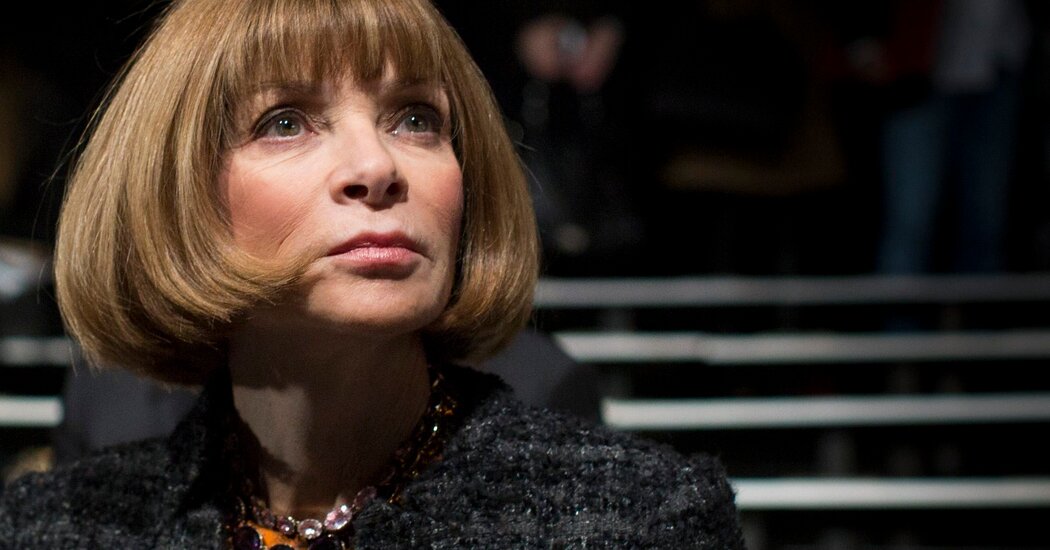
ANNA: The Biography, by Amy Odell
In the very first pages of “Anna,” a semi-authorized biography of the Vogue editor Anna Wintour, the protagonist cries. It is Nov. 9, 2016, the morning after her erstwhile pal Donald J. Trump was elected to the presidency, and Wintour is speaking at a hastily arranged all-staff meeting. In the course of inveighing against a Women’s Wear Daily article that accused her of going too far in her support for Hillary Clinton, she cracks. This sort of peek into the soul that inhabits the iconic bob and sunglasses is what the book promises. On the cover, Wintour smirks from behind her armor, her arms crossed defiantly, as if challenging the reader to pierce the veil. The author, Amy Odell, tries valiantly.
The book is the product of over 250 interviews and exhaustive archival research: into the letters of Wintour’s father, the Fleet Street editor Charles Wintour; into just about every fashion spread Anna put together over the course of her lengthy career, including those at the obscure Viva, a Penthouse-owned skin mag for ladies that Wintour attempted to clean up in the late ’70s. Odell even turns up a spread from a 1969 issue of a fashion magazine published by a young Richard Branson, in which Wintour, misidentified as “Anna Winter,” models the “Swinging London” styles of the day: a minidress, a trouser suit and a midriff-exposing triangle top. There are about 80 pages of footnotes, bringing the biography to a page count of nearly 450 — long, in one sense, but also about half the size of Vogue’s biggest-ever September issue.
Odell’s extensive reporting dredges up a wealth of delightful details: the time Wintour scandalized her boss by featuring a $9,000 goatskin trunk in New York magazine, where she also became known for throwing her pennies in the garbage; that Andy Warhol considered her a “terrible dresser”; that she would often bump into people while rounding corners at the Vogue offices because, “being a Brit, she used the other lane”; that after she went on a lunch date with Bill Gates, she told a colleague “how attractive she thought he was”; that “she once asked her photo department to retouch the fat around a baby’s neck.”
“Anna” is a biography with naturally completist goals, so these details are scattered across a sprawling work that sometimes, well, sprawls. And because fashion prefers the high-bred and European, names spill forth as if from a Pynchon novel: Francine du Plessix Gray, Lisa Love, Rochelle Udell, Min Hogg, Carlyne Cerf de Dudzeele, Peggy Northrop and Elisabeth von Thurn und Taxis, who descends from people who actually do feature prominently in “The Crying of Lot 49.”






